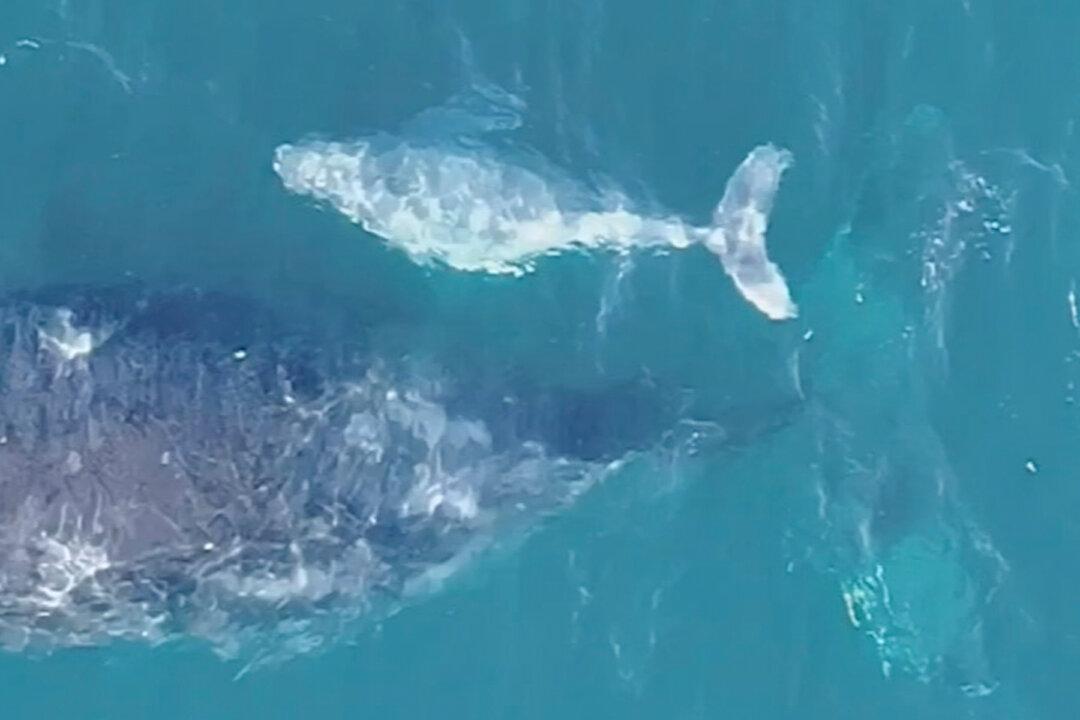An Australian father of two struck lucky with an unexpected whale sighting while out flying his drone off the New South Wales coastline. He later shared his incredible footage of a rare white humpback whale calf swimming alongside its mother, believed to be one of only five known white whales in the world.
Mark Zucconi, 53, captured the jaw-dropping footage during an outing to Macmasters Beach, New South Wales, on July 11, 2019. Mark, who hails from the nearby NSW town of Kincumber, spotted the whales via his drone from the safety of the shore and decided to track them as they swam side by side.





